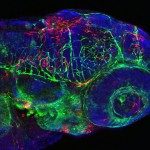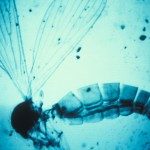Lien vers Pubmed [PMID] – 28483796
Lien DOI – 10.1242/dmm.029231
Dis Model Mech 2017 Jul; 10(7): 847-857
Alphaviruses, such as chikungunya virus (CHIKV) and Sindbis virus (SINV), are vector-borne pathogens that cause acute illnesses in humans and are sometimes associated with neuropathies, especially in infants and elderly patients. Little is known about their mechanism of entry into the central nervous system (CNS), even for SINV, which has been used extensively as a model for viral encephalopathies. We previously established a CHIKV infection model in the optically transparent zebrafish larva; here we describe a new SINV infection model in this host. We imaged in vivo the onset and progression of the infection caused by intravenous SINV inoculation. Similar to that described for CHIKV, infection in the periphery was detected early and was transient, whereas CNS infection started at later time points and was persistent or progressive. We then tested the possible mechanisms of neuroinvasion by CHIKV and SINV. Neither virus relied on macrophage-mediated transport to access the CNS. CHIKV, but not SINV, always infects endothelial cells of the brain vasculature. By contrast, axonal transport was much more efficient with SINV than CHIKV, both from the periphery to the CNS and between neural tissues. Thus, the preferred mechanisms of neuroinvasion by these two related viruses are distinct, providing a powerful imaging-friendly system to compare mechanisms and prevention methods of encephalopathies.






